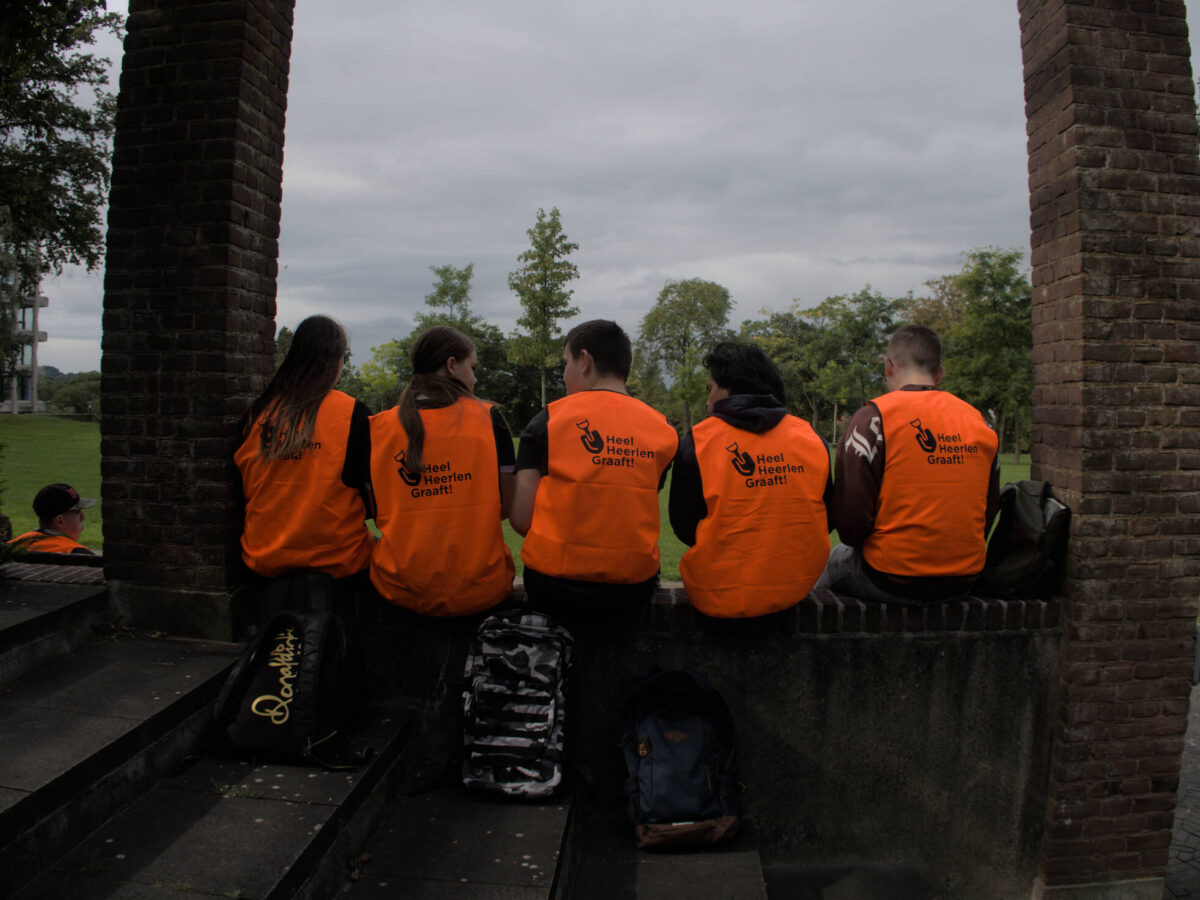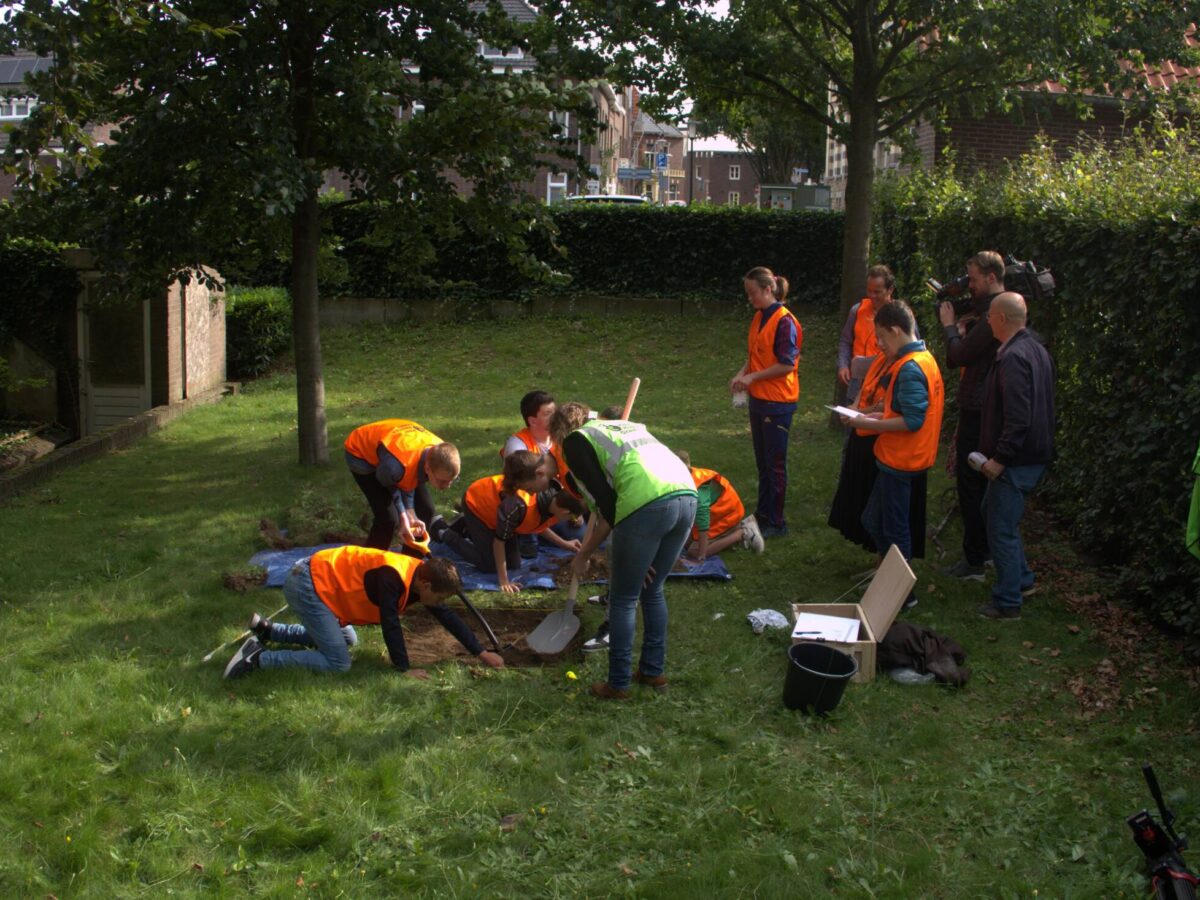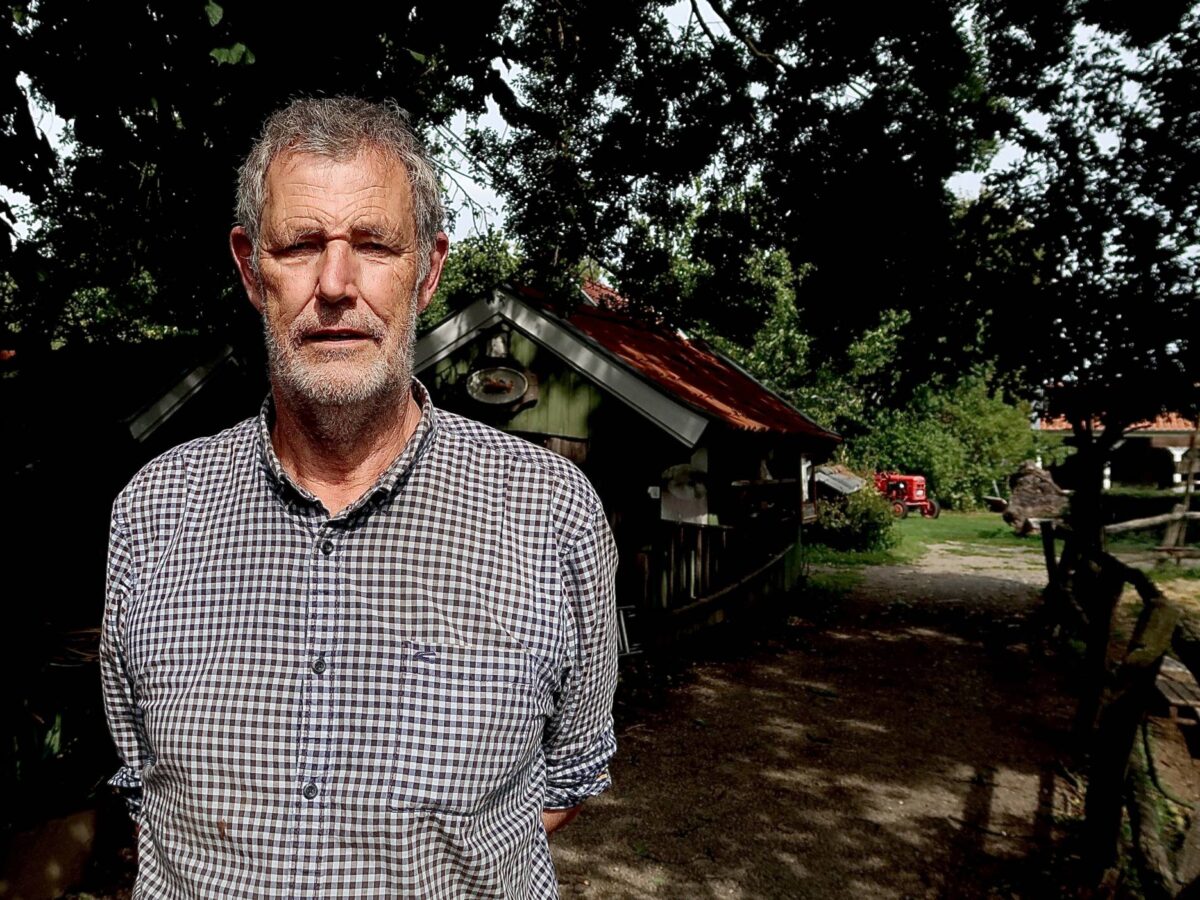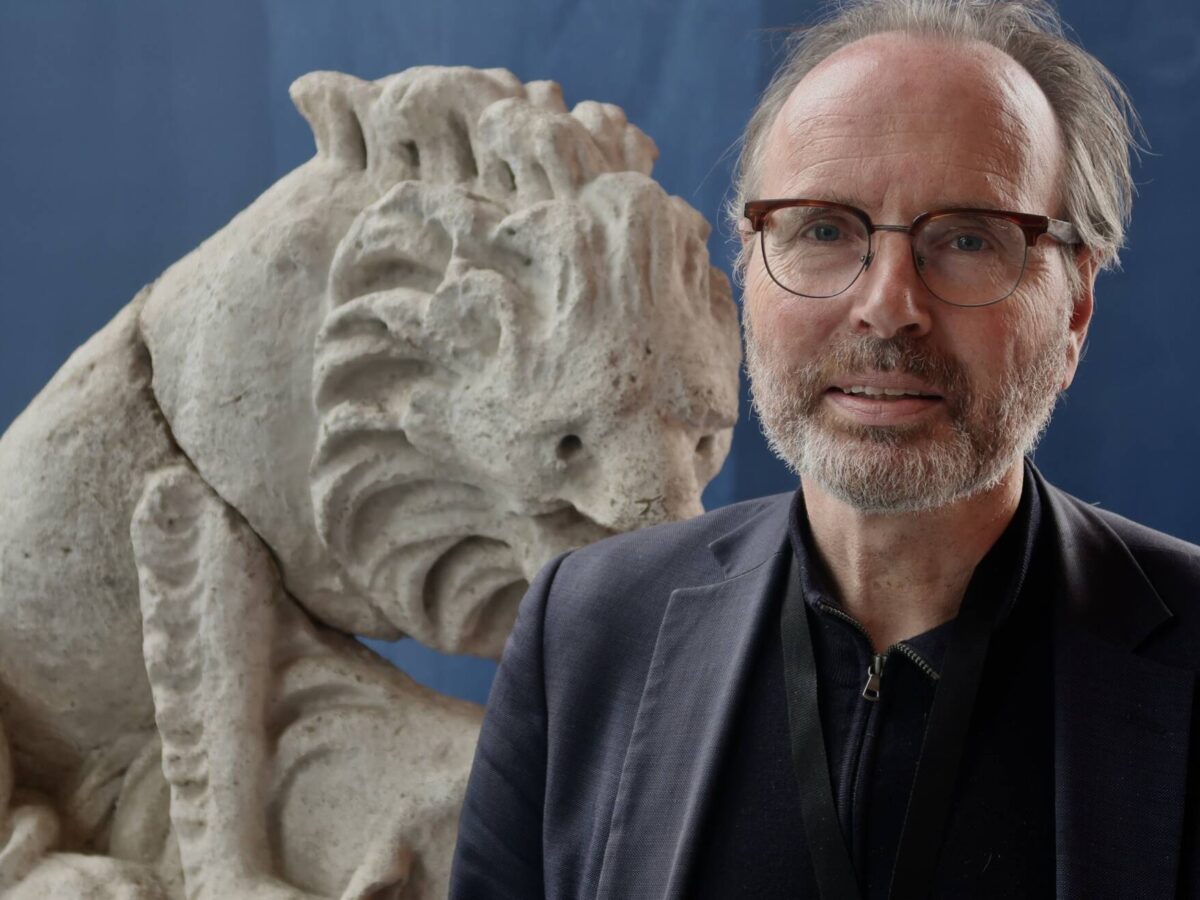Heerlen searches for the Romans in the Dinger Garden
Author: Harry Lindelauf
Photography: Harry Lindelauf
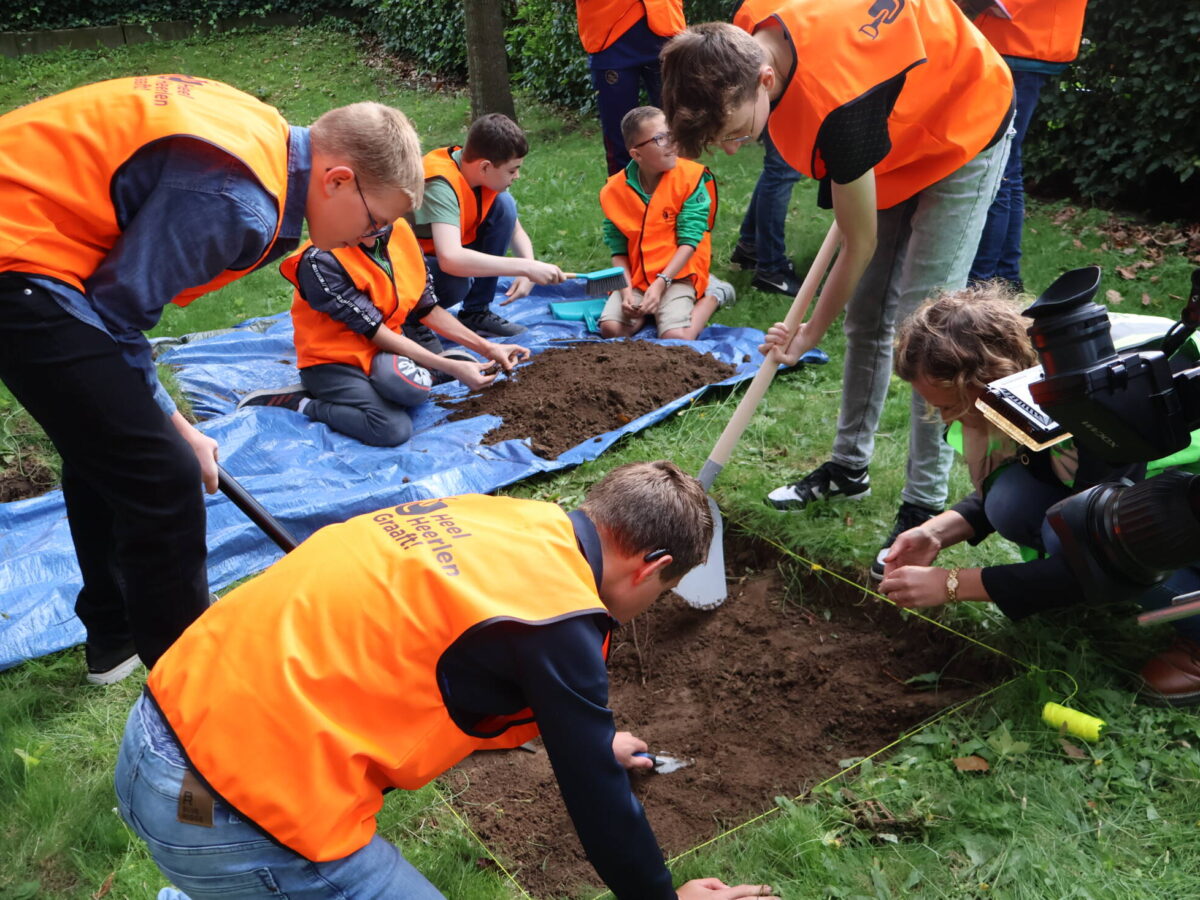
They were the second group of participants on 30 August in Heel Heerlen Graaft: pupils from the Catharinaschool and employees of companies on the Brightlands campus. In the Ir. Dinger Garden next to the campus and APG, the spade went into the ground in search of Roman remains.
The location is no coincidence, says Hilde Vanneste. The regional archaeologist shows a map on which all Roman finds in Heerlen are marked. And the Ir. Dinger Garden lies roughly south of the spot where the Via Belgica entered Heerlen. Along the road, foundations of Roman houses and a potter’s kiln have previously been discovered in the immediate vicinity. And soundings by archaeologists at the excavation sites had already revealed small fragments of Roman pottery.


Is this something?
Now three excavation pits of one square metre have been set out. The twenty pupils of the Catharinaschool, whose branch is just around the corner, take responsibility for two of the pits on either side of the former driver’s house. The day before the excavation, they received a special lesson about the Romans and their significance for Heerlen.
The digging and examination of the excavated soil are done with great enthusiasm. Every little piece of stone is studied with precision, and the accompanying archaeologist is repeatedly asked: “Is this something?” — “Maybe, when it’s cleaned,” is the most frequent answer, and the finds are neatly placed in labelled plastic bags.
The young archaeologists in the making carefully follow the tips of the professionals and keep precise records. They benefit from a spot where the excavation pit has already been dug to a reasonable depth in recent weeks. The expectation is that at a depth of 120 to 140 centimetres, the level of the Roman period will be reached.
Time and sweat
In the rose garden of the Ir. Dinger Garden, employees from the Brightlands companies face a tougher task. The pit is new, and the clay soil is rock hard. Progress is slow, but after about 30 centimetres of digging, there is encouragement: a small piece of glazed pottery appears, dating from the Middle Ages. Reaching Roman level here will still take some time and sweat.
Heel Heerlen Graaft started on Sunday 18 June and will conclude on 9 and 10 September. Residents and archaeologists will then dig together at 25 locations in the Roman quarter of the city, searching for remains from the Roman past. Most of the pits will be dug in the gardens of Heerlen residents participating in the project. All pits will be about one metre deep — the level at which Roman remains are expected.
The project is a collaboration between the Municipality of Heerlen, Constructing the Limes, NWO, the Thermenmuseum, Restaura, De Vondst, LGOG, and numerous volunteers.



